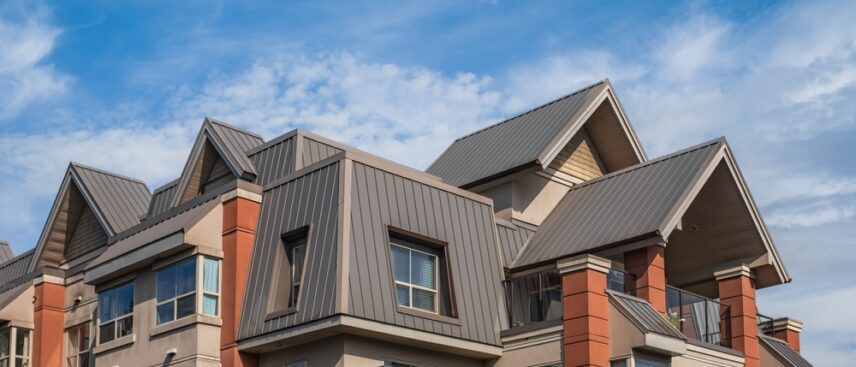Durability is often the number one feature that homeowners are looking for when choosing materials for a new roof. Although style and color options are great, nothing compares to longevity and resistance to damage during storms. No matter where you live, metal roofing will likely live up to the challenges of storms and wind. It’s also an excellent choice for withstanding the potential damage caused by snow or hail. However, you’ll need to consider a few things before investing in this roof for your home.
Types of Metal Roofing
It’s important to ensure you choose the right style of metal roofing to match your home’s exterior. This modern and up-to-date roofing material offers more than one look.
There are two primary types of metal roofing. Metal panels offer coverage with as few seams as possible, but metal tiles come in various styles that really stand out.
Metal Panels
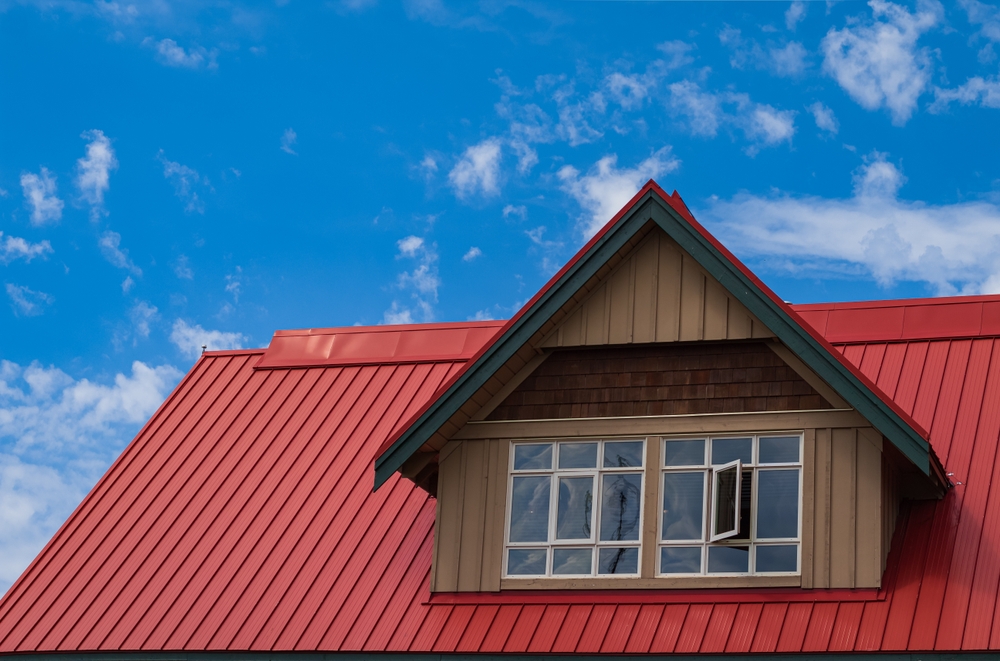
Once the primary option for covering your roof in metal, today’s panels last longer than ever before. Metal roofing panels are made from steel, aluminum, or zinc, with each metal offering a different mix of benefits:
- Steel: Extra durability and ease of recycling in exchange for a heavier weight
- Aluminum: Highly recyclable and lighter for easier installation
- Zinc: Long lasting due to corrosion resistance, requires less maintenance than other metals
Even among a single type of roofing material, you’ll need to compare details like gauge. The gauge of the metal refers to its thickness. It’s an essential detail in metal panel roofing because most of your roof is only covered with a single layer of this material. If it’s too thin, it won’t last long enough or withstand damage from falling branches and hail. Metal gauges are measured inversely, with higher numbers referencing thinner metals and lower numbers referring to thicker materials.
Metal roofing panels can work well as bare metal, but most are coated with a protected finish to control corrosion and UV damage. You can choose from shiny and matte finishes, as well as a range of colors. Reflective options reduce unwanted heat gain in the summer.
Metal Tiles
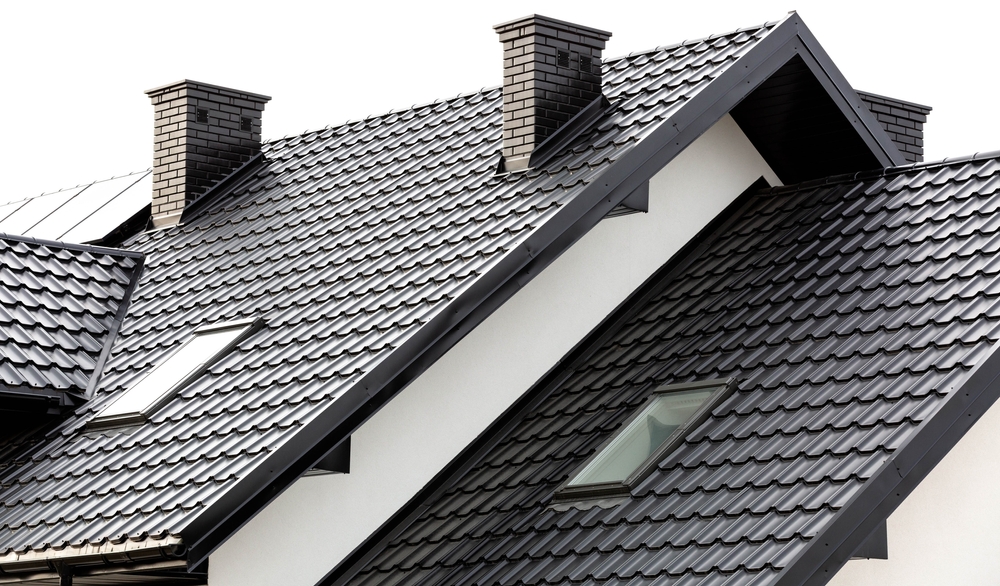
Metal tiles have emerged on the market over the last few decades for a more decorative appearance. The sky is the limit when it comes to the aesthetic options for metal roofing tiles. You can find designs that mimic materials like shake shingles without the maintenance or slate shingles without the heavy weight. Additionally, the smaller size of metal tiles makes them a little easier to install than full-sized metal panels.
Metal roofing tiles also conform to unusual roof lines with multiple ridges and valleys more easily than larger panels. Since most installation patterns leave the tiles slightly overlapped, as you would get with other types of shingles, the gauge of the metal used is less important than it is for panels. However, it’s still best to use the thickest gauge for durability and damage resistance. You can find metal roofing tiles made from aluminum, steel, zinc, and copper.
Benefits of Metal Roofing
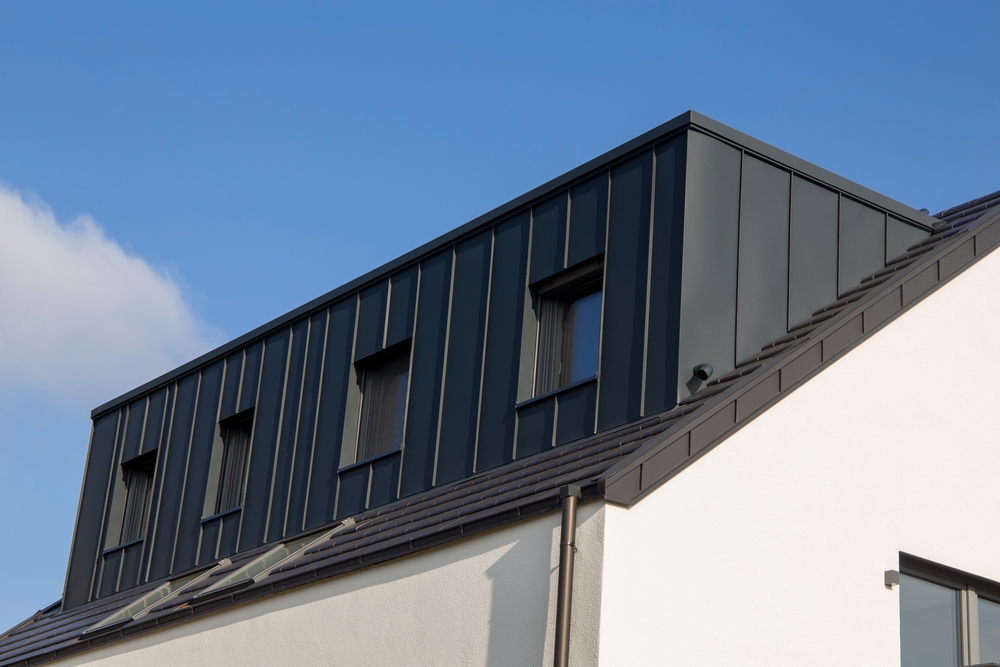
Selecting metal as your next roofing material could help you enjoy decades of worry-free service with relatively little maintenance. Learn why metal roofing is considered one of the best investments for boosting your home’s value.
Longevity
In general, you can expect around a 50-year metal roof lifespan with proper care. There’s no need to paint or stain the material regularly, but it may need occasional sealing or coating. It largely depends on the material and design. Consider that asphalt roofs generally need replacement every 15 to 20 years. Zinc roofs can last 80 years or more, even without any coatings, thanks to their innate corrosion resistance.
Low Maintenance
Aside from being kept clean and occasionally coated or refreshed with new fasteners, metal roofs need little maintenance to last for decades. It’s easy to visually assess its condition from the ground as well. You can walk around your home and look for signs that it needs attention, reducing the chances of coating loss or leaks going without repair.
Energy Efficiency
Metal roofs can reduce the energy you use in your home by up to 40%, especially by reducing summer heating needs if you choose a reflective finish. This kind of roofing also protects lofted insulation materials like fiberglass and blown-in cellulose better than other types. A leak-resistant and long-lasting roof is a major part of maintaining energy efficiency in the long run.
Sustainability
In addition to reducing your home’s energy use, metal roofing can help the environment thanks to less intensive manufacturing processes and recycling opportunities. Many materials, like zinc and steel, have recycling rates near 100%. Other roofing materials end up in landfills at the end of their lifespan, but you won’t have to worry about this due to metal roof sustainability initiatives.
Wide Range of Styles and Colors
Between standard metal panels, standing seam systems, and metal tiles in a variety of shapes, you have many options for getting the look you want. With so many metal roof styles to choose from, there’s no need to compromise between aesthetics and functionality.
Considerations for Metal Roofing
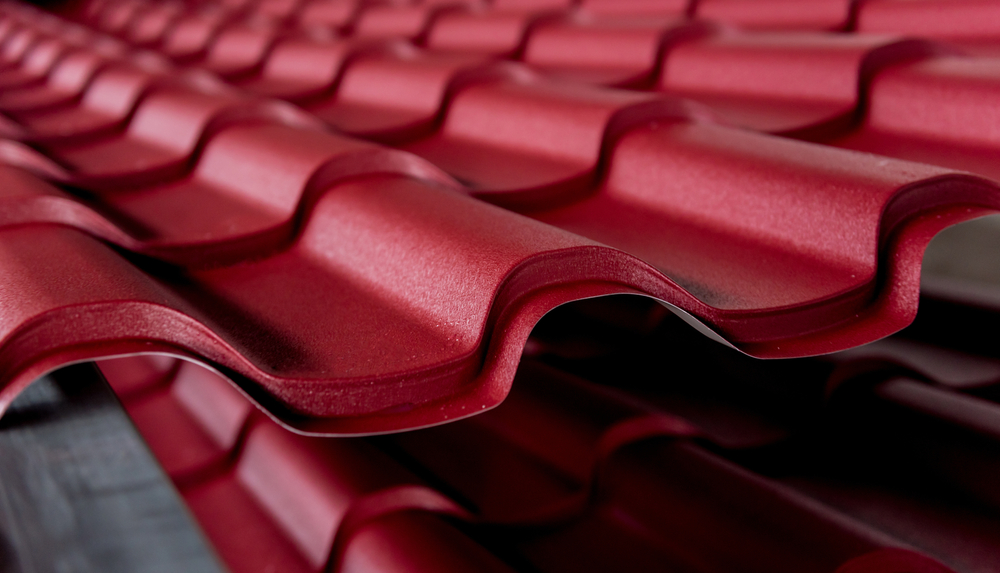
While metal roofing is long-lasting and can reduce the work you do to maintain your home over the years, there are some considerations to remember.
Initial Cost
Metal roofs tend to cost more than many other roofing materials, including some that can offer the same lifespan and damage resistance. The exact price varies depending on style and installation details, but a metal roof costs around $5 to $30 per square foot. Specialty materials like copper and lead cost more, as do longer-lasting coatings. The roof’s size and pitch will determine the labor cost for installation, as will the size and weight of the metal panels or tiles.
Noise Concerns
This roofing has earned a reputation through nostalgic media as a source of pattering noise when there’s a rainstorm. While this is somewhat true, the construction of most modern homes with attic air spaces and layers of insulation makes it hard to hear the sound. There are also many options for silencing the sound that makes it down through the rooms of the home. Of course, you may find the pattering of rain to serve as a benefit rather than a downside.
Potential for Denting or Scratching
Metal roofing is highly resistant to damage that can affect asphalt shingles and other roofing materials. Yet they’re still not completely indestructible. Falling branches and other heavy debris can leave thinner gauge materials dented or bent. High winds can do the same, especially if you don’t pay for stronger fasteners to resist lifting. Materials like copper, lead, and zinc are more easily scratched than other metals. For most people, these issues won’t come up much over the roof’s lifespan.
Metal Roofing: A Great Look with Excellent Protection
Metal might give your home the perfect look while protecting it from storm damage for 50 years or longer. Consider it for your new construction project or when your home needs major roof renovations. Most homes will only need minimal modifications to support the weight of metal tile or panel roofing.
